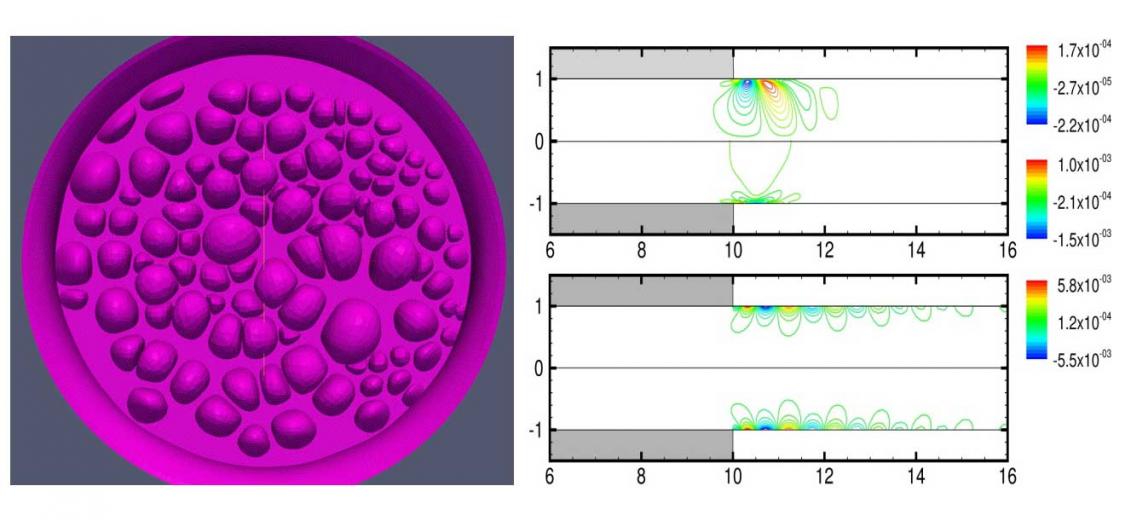PERSONNEL
| John Tsamopoulos | Τel: 2610-997203 Fax: 2610-996178 |
tsamo@chemeng.upatras.gr |
| Ioannis Dimakopoulos | Tel: 2610-969565 | dimako@chemeng.upatras.gr |
| Irene Mavreli | Τel: 2610-997203 | irene@chemeng.upatras.gr |
| Laboratory web page | http://fluidslab.chemeng.upatras.gr/ | |
DESCRIPTION
Our research topics are related to Fluid Mechanics, Rheology, Transport Phenomena, Stability & Dynamics of Processes and Numerical Methods for solving continuum problems. Applications originate from modern processes to fabricate new materials and efforts to reduce energy consumption. Examples:
Mechanical testing of Pressure Sensitive Adhesives, PSAs: PSAs were studied in the EU-funded project “MODIFY” aiming at building fundamental understanding of the role of material structure and properties in their performance. We modelled their mechanical test according to which a film is placed between two parallel disks. The disks are pulled away from each other and cavitating bubbles arise, expand and lead to a fibrilar structure and failure of the adhesive. We examined how this mechanism is affected by changes in the material rheological properties. The figure on the left is a snapshot of the simulations of an experiment reported by a French collaborator, where 99 bubbles were seen to cavitate. The dynamic and 3D simulation results are in very good agreement with experiments.
The shark-skin instability in polymer extrusion: During polymer extrusion, instabilities arise limiting the production rate. With our linear stability analysis using the ePTT model, we found that the flow becomes unstable as material elasticity exceeds a critical value due to a Hopf bifurcation, suggesting that the flow becomes time-periodic. The corresponding eigenvectors indicate that the flow attains a spatially periodic structure, initiated at the die rim, extending for ~5 die gaps downstream, but confined close to the surface of the extrudate, in agreement with experiments. Instability is generated by the die-lip singularity causing strong extension of polymeric chains. The figure on the right gives the part of the critical eigenvector related to (a) radial/axial velocity components and (b) pressure.
EQUIPMENT
Please see the lab web page: http://fluidslab.chemeng.upatras.gr/
ΕΡΓΑ-ΑΠΟΤΕΛΕΣΜΑΤΑ
Please see the lab web page: http://fluidslab.chemeng.upatras.gr/
